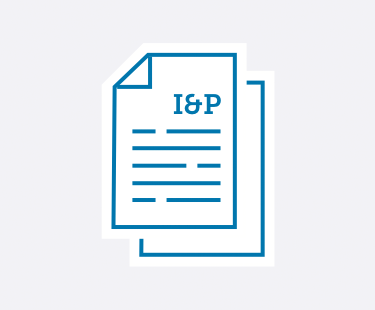

Learn practical strategies to handle emerging trends and leadership challenges in private schools.
No matter if you’re a School Head, Admission Director, Development Director, Board member, or any other private school administrator—Ideas & Perspectives®, ISM’s premier private school publication, has strategic solutions for the pervasive problems you face.
- Tuition not keeping pace with your expenses? In I&P, explore how to use strategic financial planning to create your budget and appropriately adjust your tuition.
- Enrollment dropping off? Discover how to implement the right admission and enrollment management strategies that engage your community—and fill your classrooms.
- Trouble retaining teachers? Learn how you can best support your teachers using ISM’s Comprehensive Faculty Development framework. Your faculty members will become more enthusiastic about their roles—which ultimately improves student outcomes.
- Fundraising campaigns not as successful as you’d hoped? Implement ISM’s practical advice and guidance to build a thriving annual fund, construct an effective capital campaign, and secure major donors—no matter your community size or location.
- Not sure how to provide professional development—for you and your staff? Learn ways to develop and fund a successful professional development strategy. You can improve teacher-centered satisfaction and growth, which in turn strengthens student-centered learning.
- Problematic schedule? You can master the challenges of scheduling with the help of ISM’s practical advice, based on our experience with hundreds of schools and our time-tested theories.
- And so much more.
I&P has shared targeted research, up-to-date insight, and sound theory with school leaders since 1975. More than 8,500 private school decision-makers find the answers to their schools’ administrative and governance matters in our advisory letter. We give you the strategic answers you need.
As an ISM Silver or Gold member, you not only receive issues online and in print 10 times a year, but you have access to 900+ articles in our web archive. Need help? It’s at your fingertips! Learn more and sign up for ISM's membership here.
Search
See the articles from our latest issue of Ideas & Perspectives.
School Head Longevity and Attrition
Volume 40 No. 1 // January 16, 2015
A new study (building on previous work) throws important light on School Head longevity and attrition—perhaps something of some concern to you, the Board President. The statistics on this are extremely hard to get industrywide, and many numbers have been thrown around based on gut feeling or personal experience. A report from the National Center for Education Statistics sampled 7,400 public and 1,700 private schools to obtain the findings on school principals.* The study allows us to compare two different calendar years—2008–2009 and 2012–2013. The following table considers whether the School Head (principal in the study) remained at the school from one year to the next, left the position of Headship entirely from one year to the next, moved to take up a Headship at another school, or stayed at the school. The column marked other denotes those for whom there is no information available. The base year for 2008–09 was 2007–08; the base year for 2012–2013 was 2011–2012.
1. Already a member? Click here to login.
2. Not a member? Click here to become a member.
3. Not sure? We'll help you figure it out.
Adolescent Sleep and Upper School Start Times
Volume 40 No. 1 // January 16, 2015
There are two long-believed axioms about adolescent sleep: (1) as children reach adolescence, they go to bed and get up at later hours; and (2) adolescent sleep deprivation is a widespread phenomenon. The National Sleep Foundation’s survey and research, as well as that of others, has established the support for these axioms.1 Adolescent sleep patterns undergo a “phase delay;” the typical upper school student’s natural time to fall asleep is 11:00 pm or later. Despite adolescents needing 8.5–9.25 hours, the average teen gets approximately 7.5 hours of sleep a night; 62% of 9th–12th graders report insufficient amounts (i.e., less than eight hours) of sleep; and only 3% of seniors get “optimal” sleep on school nights. Adolescents do not adjust their bed times in response to changes in the time of day that school begins, so an hour later start time translates to about an hour of additional sleep.
1. Already a member? Click here to login.
2. Not a member? Click here to become a member.
3. Not sure? We'll help you figure it out.
Debt Interest and Principal
Volume 40 No. 1 // January 16, 2015
Debt is an important parameter to consider. Stability Marker No. 1 (in the fourth iteration of ISM Stability Markers®) recognizes that schools with debt payments up to 5% of expenses have an acceptable debt level. Conversely, debt payments above 5% increasingly stress the budget and can place the school’s existence in jeopardy. How can someone who is not finance-savvy—a Trustee, a member of the administration, or even the School Head—recognize what the school’s debt payments truly are?
1. Already a member? Click here to login.
2. Not a member? Click here to become a member.
3. Not sure? We'll help you figure it out.
The Board’s Role in the School Head’s Personnel Decisions
Volume 39 No. 16 // December 15, 2014
School Heads must make unavoidable decisions about the renewal of teacher contracts. Often teachers react as a “family” when one of their members is caught in the crosshairs—even if that individual has been deemed ineffective or undesirable by some colleagues. The mere threat of dismissal or nonrenewal can polarize faculty, administrators, influential parents, and Trustees.
1. Already a member? Click here to login.
2. Not a member? Click here to become a member.
3. Not sure? We'll help you figure it out.
Establishing Student Achievement Levels
Volume 39 No. 16 // December 15, 2014
What is a “good” student and what is a “great” student? Most schools classify students academically, both formally and informally. Entrance tests determine eligibility to attend; faculty conversations identify issues that need to be addressed; casual encounters and classroom experiences build a picture of student competence. The deep knowledge that a school has of a student can be considered an asset, as it enables the school to provide appropriate services and interventions. However, this deep knowledge is not always benign and can mask inequities detrimental to a student’s potential and actual progress.
1. Already a member? Click here to login.
2. Not a member? Click here to become a member.
3. Not sure? We'll help you figure it out.
The ISM Faculty and Management Compensation Survey, 2013–14: School Head Salaries
Volume 39 No. 16 // December 15, 2014
The School Head is the sole employee of the Board, and management of the Head’s compensation is a high priority. Numerous entities are now asking how much compensation is too much for nonprofit CEOs. Never has it been more important that the Board be fully conversant about Head compensation. Only then can the Board determine what adjustments are needed to ensure that the school compensates competitively to retain the Head or enhance its ability to be competitive in its next Head search. Trustees must educate themselves about the marketplace and understand the complexities of the School Head’s job. ISM surveyed a random sample of I&P subscriber schools concerning compensation for faculty and administrators. This article focuses on the survey results regarding the salaries of School Heads at our participating day schools.
1. Already a member? Click here to login.
2. Not a member? Click here to become a member.
3. Not sure? We'll help you figure it out.
Debt Management: A Cautionary Approach
Volume 39 No. 15 // November 24, 2014
Since the economic collapse of 2008, money has been cheap. This is not the first time this has been so, but it is unusual that interest rates have remained low for so long. This has led school leaders—School Heads, Business Managers, and Trustees—to consider long-term financing to move their schools ahead, typically within the context of buildings and renovations. While tempting, we urge caution around debt financing.
1. Already a member? Click here to login.
2. Not a member? Click here to become a member.
3. Not sure? We'll help you figure it out.
Driving Annual Fund Success Through Your Volunteer Cabinet
Volume 39 No. 15 // November 24, 2014
The annual fund is the keystone of your entire development program. Since it is broad-based and regularly occurring, it connects your school with the widest possible group of donors and helps build a culture of philanthropy in your school community. The annual fund also helps identify individuals who might later become primary supporters of capital, endowment, or major gift campaigns. It is a vital point of contact for Development Office professional staff to engage volunteers and develop volunteer leadership.
1. Already a member? Click here to login.
2. Not a member? Click here to become a member.
3. Not sure? We'll help you figure it out.
Launching Your School’s Survey Initiative
Volume 39 No. 15 // November 24, 2014
This is the second article in a three-part series on collecting and using data to assess your school and advance your school’s strategic initiatives. The first article dealt with how to build a “culture of data” in independent schools,* where decisions have traditionally been based on anecdotes, the vocal minority, past events, or instinct. Now that you have articulated your objectives, outlined the necessary tasks, and identified all the sources of data available internally (discipline records, health records, testing, etc.) that contribute to the overall picture of your school, the next step is to collect data from your various constituents. Surveys are one of the most practical and efficient data collection methods. Proper survey methodology is crucial for success; mistakes made in the design, implementation, or analysis of surveys can lead to inaccurate data and discontent among your constituent groups. There are many factors to consider when launching your survey program.
1. Already a member? Click here to login.
2. Not a member? Click here to become a member.
3. Not sure? We'll help you figure it out.
Sustainability, Pricing, and Inflation
Volume 39 No. 14 // November 3, 2014
Private-independent school leaders have experienced considerable discomfort at the oft-heard contention—by no means a new one—that tuitions have (a) increased faster than inflation and (b) increased faster than the growth of family incomes. A common conclusion from these paired facts—and they are facts—is that this cannot be sustainable. You, in your role as School Head or Business Manager, may never become comfortable dealing with these facts and with the (sustainability-related) conclusion.1 But four of ISM’s continually researched perspectives can assist you in preparing to deal with your constituents on this topic.
1. Already a member? Click here to login.
2. Not a member? Click here to become a member.
3. Not sure? We'll help you figure it out.


